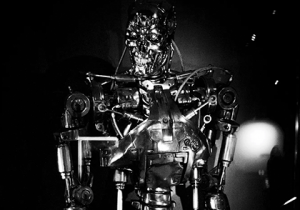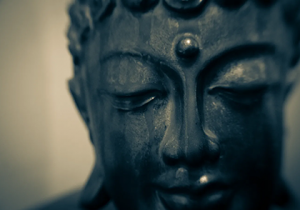

When I was an actor in Chicago, I spent all my performing time onstage, where you’re supposed to “play to the back of the house.” Be big, be loud. There wasn’t a lot of on-camera work in Chicago at the time. I was used to being in front of a crowd.
Now I’m an actor in Los Angeles. Most of my acting is done in front of a camera, whether on set or on Instagram. The less you do, the better. The camera catches every little subtlety in your face. Big facial expressions and shouting are no-nos. There was a steep learning curve.
It’s a common feeling. Sure, we’re in front of cameras all the time now — they’re on every phone. The difference? The intention. Normally we’re caught off-guard by a friend or we’re not usually talking to the camera to sell something. If we put a camera on a tripod and talk to it, it can feel weird. We feel like we’re in the hot seat.
And maybe you’re not even an actor, you’re an entrepreneur. Maybe your social media person is yelling at you to have an Instagram or YouTube presence. But you’ve spent your life working on whatever it is you’re good at, coding, design, dog walking, etc. You don’t talk to a camera, at least not in a situation like this. You’ve tried a few takes and you come off like a zombie robot, instead of the warm, funny, gregarious person you are IRL. What do you do?
- Relax. This isn’t giving a speech. It’s a camera. Though it feels weird, the advantage is that you can do multiple takes, so don’t sweat having to be perfect. If you mess up, you can do another take. And you can always “fix it in post,” as we say in Hollywood. Edit it, that is.
- Put the script in your own words. If someone else wrote it, go over it and decide if it’s written how you really talk. Even if you wrote it, say it out loud. We usually write in a more formal style than we speak, and you want to sound professional yet conversational. If the script doesn’t sound like you, make it sound like you. The script isn’t set in stone; it’s a blueprint. Speaking the way you really do will help you relax and sound more like your charming self.
- Less is more. If you’ve done any kind of public speaking, especially in an auditorium, you may feel like you need to be “big” to be seen. However, the camera picks up every little gesture. The first few times you talk to the camera you may feel inhibited. Instead of thinking, “Be small,” which can inhibit you, just remember to be casual and conversational, like you’re talking to a friend. Speaking of which…
- Who are you talking to? You know who your audience is. Great! But it’s not enough to speak to an audience. Video is more intimate than that. If I’m watching you, I want to feel like you’re speaking to me. So you’re speaking to one person, not multitudes. Who are they? Speak to someone specific, someone you know personally. If you know enough about your audience, you probably know someone who fits in that audience. Take the time to cast that person in your mind.
- Practice, practice practice. You know that production studio you have in the palm of your hand? That phone? Use it to practice on. Most of your nerves come from the fact that talking to a camera is new. Do it enough, though, and you’ll be a pro.
- Watch yourself. You will hate this part. Most people do. I still do. My first thought: “I need to lose a thousand pounds.” Then: “I hate my voice.” Then: “Why am I tilting my head like a Jack Russell terrier?” But I have to watch. Precisely because I might have a distracting tic. At the same time, be kind to yourself. After all, you’re not an on-camera professional; you’re a designer/coder/dog walker, etc. Don’t use self-critique to make yourself self-conscious—use it to improve your technique and feel more comfortable.
If you keep these tips in mind, you’ll feel much more like the authoritative, warm person you are; and hey, people want to work with that person!


I learned How to Write With Skynet

City Hall: Use the Immoral Powers Granted by the Constitution to Tear this Storefront Down so I can Date Again

14 Things to Do Before Starting Your New Year’s Weight Loss Program

Six ways to be completely, entirely Zen in front of a camera.
